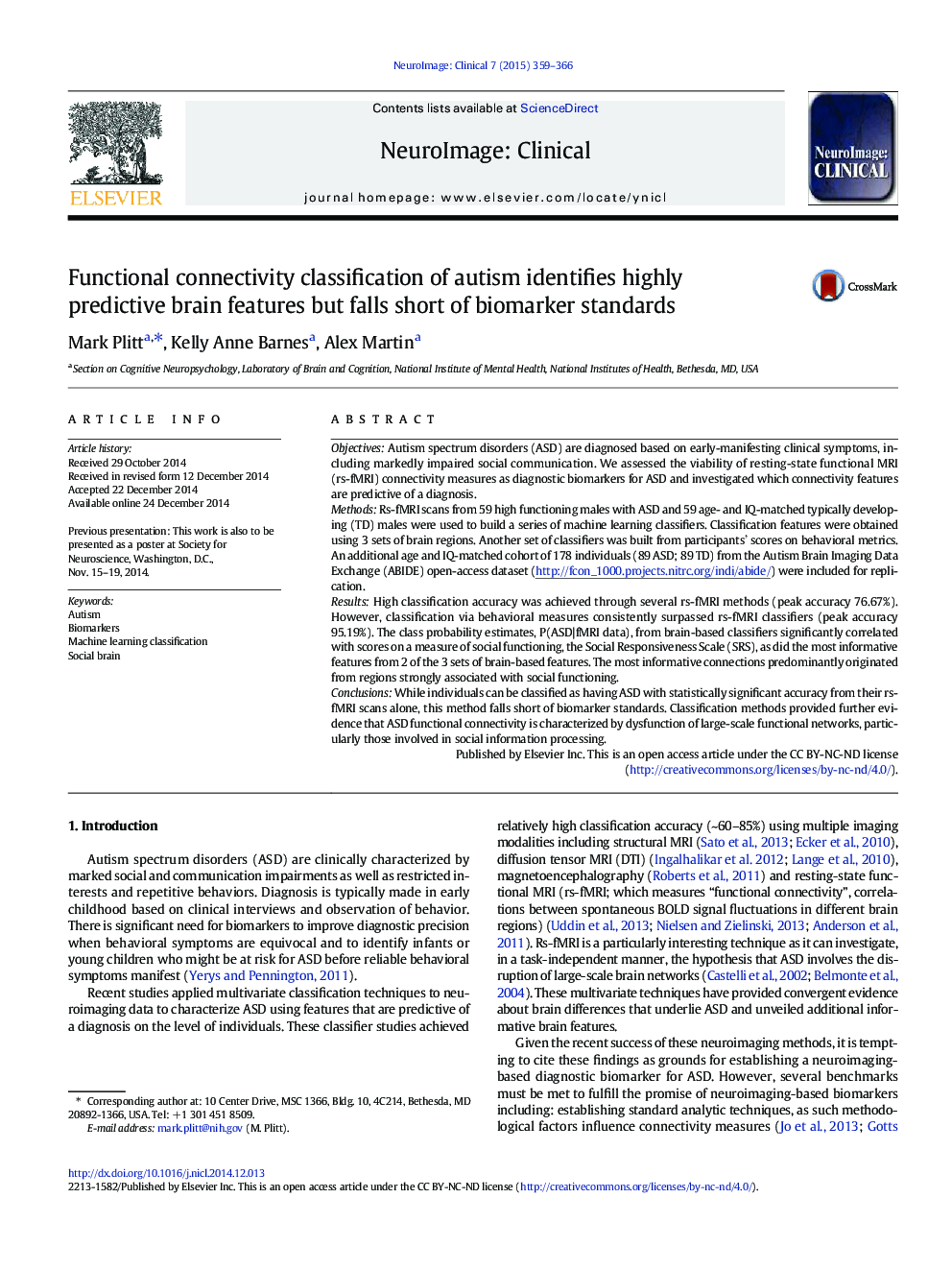| Article ID | Journal | Published Year | Pages | File Type |
|---|---|---|---|---|
| 3075089 | NeuroImage: Clinical | 2015 | 8 Pages |
•We distinguish rs-fMRI scans from ASD and TD individuals with high accuracy.•ASD versus TD classification using behavioral metrics was much more accurate.•Highly predictive brain features largely originated from the canonical social brain.•High performing brain features also correlated with individual symptom severity.
ObjectivesAutism spectrum disorders (ASD) are diagnosed based on early-manifesting clinical symptoms, including markedly impaired social communication. We assessed the viability of resting-state functional MRI (rs-fMRI) connectivity measures as diagnostic biomarkers for ASD and investigated which connectivity features are predictive of a diagnosis.MethodsRs-fMRI scans from 59 high functioning males with ASD and 59 age- and IQ-matched typically developing (TD) males were used to build a series of machine learning classifiers. Classification features were obtained using 3 sets of brain regions. Another set of classifiers was built from participants' scores on behavioral metrics. An additional age and IQ-matched cohort of 178 individuals (89 ASD; 89 TD) from the Autism Brain Imaging Data Exchange (ABIDE) open-access dataset (http://fcon_1000.projects.nitrc.org/indi/abide/) were included for replication.ResultsHigh classification accuracy was achieved through several rs-fMRI methods (peak accuracy 76.67%). However, classification via behavioral measures consistently surpassed rs-fMRI classifiers (peak accuracy 95.19%). The class probability estimates, P(ASD|fMRI data), from brain-based classifiers significantly correlated with scores on a measure of social functioning, the Social Responsiveness Scale (SRS), as did the most informative features from 2 of the 3 sets of brain-based features. The most informative connections predominantly originated from regions strongly associated with social functioning.ConclusionsWhile individuals can be classified as having ASD with statistically significant accuracy from their rs-fMRI scans alone, this method falls short of biomarker standards. Classification methods provided further evidence that ASD functional connectivity is characterized by dysfunction of large-scale functional networks, particularly those involved in social information processing.
